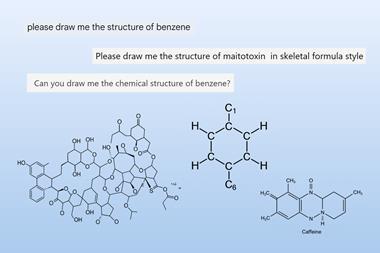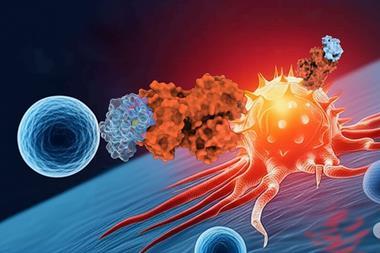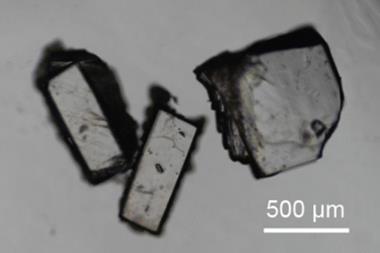No drug designed by artificial intelligence has ever entered a phase 3 clinical trial, the final hurdle before regulatory approval. This could soon change, however. A small molecule from InSilico Medicine that targets a chronic lung disease could enter this final stage within the next year or two.
The company reported a 71-patient study in China in June showing that the molecule, rentosertib, was safe and well-tolerated. This is the most advanced investigational drug in which the biological target and therapeutic compound were discovered using AI.
Claims are now regularly made that AI is set to ‘transform the discovery of drugs’. There are holdouts, however, who warn that AI has yet to make a significant impact during the crucial and costly phases of drug research and development. InSilico now needs to show that its candidate effectively treats a lung-scaring condition, idiopathic pulmonary fibrosis, in large phase 3 trials.
Turbo-charging discovery
AI excels in searching and mining huge datasets extremely efficiently, summarising that information and detecting patterns in the data. ‘The promise of AI is to be faster and a little more sensitive in detecting signals in a large ocean of noise,’ says Chris Meier, a former pharmaceutical researcher now at Boston Consulting Group (BCG). This is especially true of machine learning, a type of AI that is extremely proficient at identifying which proteins or genes should be targeted, for instance, based on experimental results.
The promise of AI is to be faster and a little more sensitive in detecting signals in a large ocean of noise
Chris Meier, Boston Consulting Group
Meier led the first systematic analysis that evaluated the clinical pipelines of AI-driven biotech companies in 2022. The study made headlines because it reported that AI-discovered molecules in phase 1 scored an 80 to 90% success rate, substantially higher than historic averages of around 66%. AI can revolutionise drug discovery by, the analysis explained, conducting many of the most time-consuming, repetitive and costly steps and turbo-charging exploration.
Not everyone was impressed though. AI relies on data that has been collected, meaning that chemical space has already been explored. ‘Many of those targets are not very novel,’ says Andreas Bender, a professor of machine learning in medicine at Kalifa University in Abu Dhabi. ‘You know the target so you know more about the safety associated with it.’ This helps a firm choose candidates that might be suited to passing the first, safety trial.
Medicinal chemist Derek Lowe scrutinised each of the 24 candidates in a blog and noted that in almost every case, ‘the targets were already known to be implicated in the disease under investigation’. He is wary of AI being oversold in ‘a barrage of stories about extraordinary advances’, with revolutionary claims. ‘People get carried away very easily in this area,’ says Lowe. ‘I’ve seen wave after wave of enthusiasm for all sorts of different computational approaches.’
AI excels in predicting protein structure, but here algorithms like AlphaFold sit on the large and clean dataset of the Protein Data Bank, which contains over 200,000 structures. When using the scientific literature for machine learning, algorithms run into a problem not of their making: a severe bias in reporting of only what works. ‘You really need lots of quality negative results scattered in the data for a machine learning model to get traction. But we don’t publish those – we pretend they never happened,’ says Lowe.
Big deals
Still, partnerships between AI biotechs and pharma companies have proliferated. In January 2024, Isomorphic Labs – a subsidiary of tech giant Alphabet – entered into deals with drug firms Eli Lilly and Novartis that could be worth billions. In 2023, Benevolent signed a deal with Merck for $594 million (£439 million).
Recursion was founded in 2013 on a machine learning strategy based on a single foundational assay and now runs highly automated in-house labs. ‘We generate data covering swathes of biology and chemistry before we zero in on individual diseases,’ says Lina Nilsson, the firm’s chief platform officer. The company’s stated aim is to reduce the massive 90% failure rate of traditional drug discovery.
One highlight from its pipeline is a molecular glue that leads to the breakdown of a protein essential to the survival of some cancer cells. Recursion announced last December that it had dosed the first patient with this candidate drug to treat certain solid tumours and lymphoma. ‘This programme went from target initiation to [new drug application]-enabling studies in about 18 months, while the industry average is around 42 months,’ says Nilsson.
However, Lowe says AI is best equipped to help in areas that ‘are in almost inverse proportion to how important they are to the expense of developing drugs’. It excels at suggesting new molecules to target known proteins or genes, and how to make them, but it has less perspicacity for pitfalls in patients such as unexpected toxicity, he notes.
Failing late also costs more – a lot more. When a compound looks promising in a lab it goes to phase 1 clinical trials to evaluate safety – such trials may involve just 15 to 20 people and cost only a few million dollars. The next phase can cost around $45 million and the final, phase 3 study for efficacy can take three to four years and swallow hundreds of millions of dollars, with just a 55% likelihood of success.
Hype versus hope
This is relevant to AI drug candidates because they are invariably not derisked at the biological target level, says Lowe. ‘[InSilico] used their machine learning techniques to try to speed up the earlier stages of the process, but then they stand up and take their chances like the rest of us,’ he says. He is not alone in this view.
Bender says that AI has thrived in analysing the results from biochemical assays to select and hit targets, which matters, ‘but much of the in vivo translation is completely missing’. The reason: there is far less data from patients and toxicological predictive models, for now, underperform. ‘We have millions of data points for target-related activity, but far fewer data points for complex biological systems,’ says Bender. ‘You often cannot extrapolate from simple assays to predictions of organ toxicity,’ he adds. Even the mechanism for drug-induced liver injury, the most common type of organ toxicity, is only partially understood.
I am a short-term pessimist and a long-term optimist. I see no reason why these techniques can’t do great things
Derek Lowe, medicinal chemist
Right now, this all leads some to conclude that there is a gap between hope and reality, but it does not have to stay that way. ‘There’s some evidence that AI is accelerating discoveries and, in some places, making them more successful,’ says Meier at BCG. ‘The hope is that AI will make drug discovery faster and maybe change the economics of it.’ It is hard to tell right now though, because many drug candidates heavily influenced by AI have not made it to large-scale patient trials that test efficacy.
In the last year, AI-focused biotech has hit headwinds. AI-drug firm Exscientia made substantial staff cuts and narrowed its pipeline in 2024, before Recursion bought it in an all-stock deal. Germany-based biotech Evotec trimmed its pipeline by 30% this year. And in May, Recursion announced that it was ending two clinical programmes for rare neurological disorders and one for treating Clostridium difficile infection for commercial reasons. ‘We’ve prioritised oncology and rare diseases,’ Nilsson says.
Drug candidates developed using AI are now going mainstream, but how successful the current generation will be remains unknown. Nevertheless, automation of experiments, as well as machine learning and generative models, are now pervasive in drug R&D. AI will eventually deliver is the view of even the sceptics. ‘It is not a good idea to be against advances driven by computing, hardware and algorithmic power,’ says Lowe. ‘I am a short-term pessimist and a long-term optimist. I see no reason why these techniques can’t do great things.’


















No comments yet